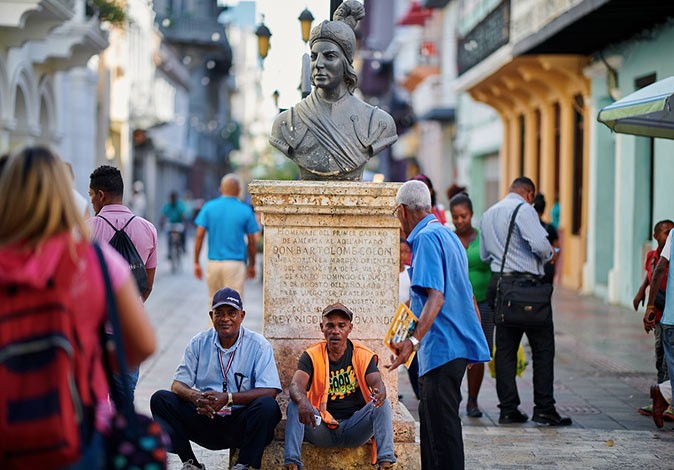What is it like to move to and live in the Dominican Republic?
I’ve lived on two Caribbean islands myself (St Maarten and Aruba) and visited many other parts of the Caribbean, but never the Dominican Republic.
I’ve always wondered what the Dominican Republic is like though. It’s the second-largest country in the Caribbean and I think that might make it an interesting place to live (island fever on those smaller islands is a real thing!).
So, I’m very excited to do this interview with Chris who moved to the Dominican Republic several years ago.
This interview is part of the Ask an Expat series. In this series I interview people living all over the world but outside of their country of birth. I try to help paint an honest picture of the ups and downs of living abroad, share tips for anyone thinking about moving abroad, and information about the place the expat now lives in.
Living in the Dominican Republic
Name: Chris
Age: 36
Hometown: Dresden, Germany
His Story:
”I’ve been infected with the travel bug for nearly my entire life.
After studying tourism in Germany and working for a tour operator organizing trips to North America, at the age of 24 I moved abroad to the Caribbean island of Grenada in 2011, where I continued to work in the tourism business.
Three years I called that incredibly beautiful island home before I decided to backpack around the world for a year and afterward settled on another Caribbean island: Hispaniola, which is home to the Dominican Republic.”
Why Did You Move to the Dominican Republic?
”When I was traveling the world, I unexpectedly came across a job in the Dominican Republic in the same field I worked in in Grenada. Even though I had never been to the Dominican Republic and didnt speak Spanish, I was up for the challenge, applied and got accepted.
Choosing the Dominican Republic was a no-brainer in the end as I really enjoyed the three years I lived in the Caribbean before and was happy to get to know a new side of the Caribbean the Latin Caribbean.”
What Do You Like About Living in the Dominican Republic?
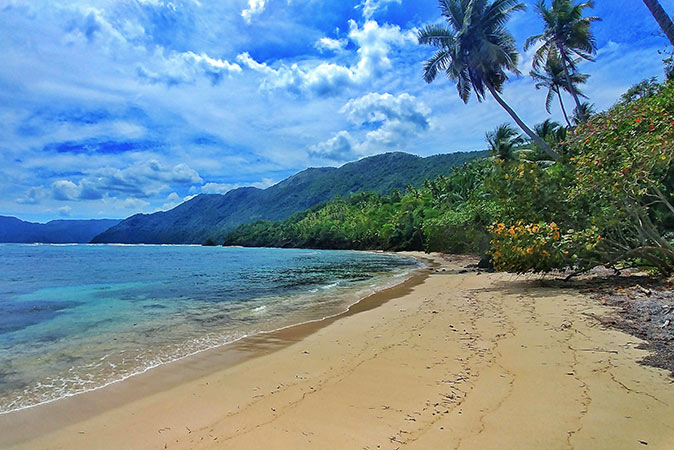
”What I love most about living in the Dominican Republic is the never-ending variety of destinations within the country.
From the capital, Santo Domingo, you can reach most of the attractions of the Dominican Republic within three hours. It doesnt matter if youd like to explore the North Coast, go hiking in the mountains, enjoy the wonderful Saman peninsula, unwind in one of the all-inclusive resorts in Punta Cana, or head to some of the most beautiful beaches in the Dominican Republic.
Most places are also easily accessible by public transport and the cost of accommodation and attractions is moderate. Beaches in general are free and most national parks, waterfalls, viewpoints, or hiking areas dont charge an entrance fee either.
Other things I love about life in the Dominican Republic are the welcoming vibe of the Dominicans (I had so many friends after just a couple of weeks), the vibrant life on the streets (music is everywhere and one of the most important things in Dominican life) and the more easy-going approach compared to the more organized and regulated way of life in Germany.”
What Do You Dislike About Living in the Dominican Republic?
”There is not much to dislike about living in the Dominican Republic, but of course, there are things that might be bothersome.
Trash is definitely an issue in the entire country. If you’d get a heart attack watching someone throwing trash out of a car window onto the road, you shouldnt live here.
The general level of noise can be an issue as well. This is especially bad when youre living next to a bar, a gas station (which often converts into a bar during weekends), a local mom-and-pop store (might be a bar at night as well), or a car wash (guess what a car washs most important revenue stream is the bar section).
Another problem might be education. If you want to live in the Dominican Republic as a family, it is nearly mandatory to send your children to an international school, as the public education system is one of the worst in the Western Hemisphere.”
Is the Dominican Republic Safe as a Place to Live?
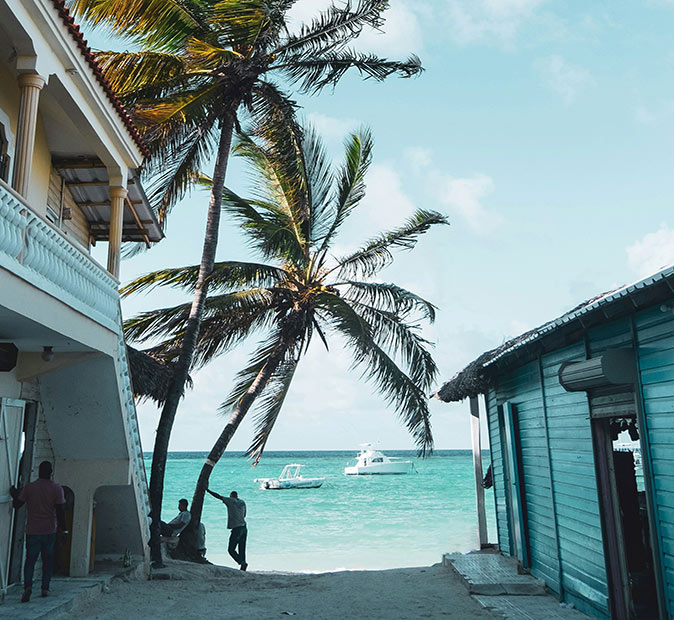
”In general, the Dominican Republic is a safe place to live and typically safer than its reputation.
Most of the crime happens in poor neighborhoods and big cities. But if you’d move to the Dominican Republic you’d probably choose to live either in relaxing beach towns such as Cabarete, Las Terrenas, or Bayahibe or in safe parts of Santo Domingo or Santiago, so you’ll be fine.
Just be careful where you go out at night, as most crime happens late at night or during the wee hours of the morning.
The countryside I’d say is absolutely safe. I really enjoyed all the different hiking trips I’ve done in the Dominican Republic along with remote beach camping and exploring unknown villages.”
Is the Dominican Republic Expensive as a Place to Live?
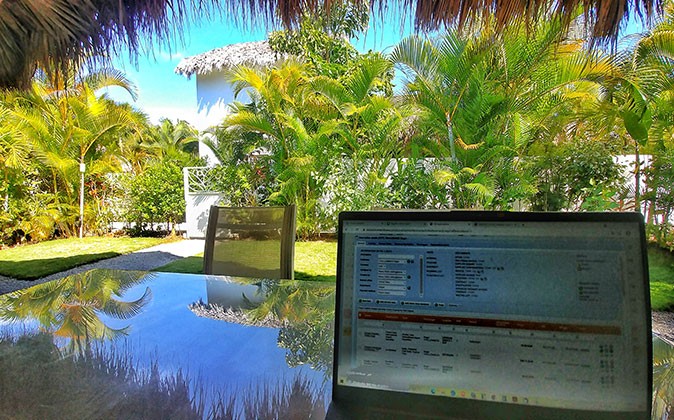
”Well, if you look at the minimum salary in the Dominican Republic (around 300 USD per month depending on the industry you work for), then yes, life in the Dominican Republic is pretty expensive.
However, even if you move to the Dominican Republic for a local job, most likely because of your language skills or work experience you’ll earn at least 1000 USD to 2000 USD per month. And that is sufficient for a comfortable life in the Dominican Republic.
In my opinion, a monthly budget of 1500 USD for a single person or 2500 USD for a couple is perfect. It will allow you to live in a good neighborhood, travel inside the country on occasional weekend trips or holidays, go out regularly without splurging, and still have some money left at the end of the month.
If you want more luxury in your life than that, for example being able to eat out every other day at international restaurants or living in a luxury apartment, then I’d recommend budgetting 50-100% more.
Lastly, it’s worth noting that life in Punta Cana is approximately 20-30% more expensive than life in the rest of the Dominican Republic.”
What Is Your Favorite Thing to Do in the Dominican Republic?

”Thats difficult to say, but my top 3 things to do in the Dominican Republic would be the following:
- Hiking. There are hardly any marked hiking trails in the country, but with GPS and Trail Apps and/or local guides you can find amazing hikes in every province)
- Exploring pristine beaches. Most people only know Punta Cana and its beaches, but most of the beaches in the country are completely pristine and feature spectacular settings.
- Road-tripping around the country. The Dominican Republic is extremely versatile and manifold and it is so much fun to explore all the different places.
What Is the Expat / International Community Like in the Dominican Republic?
”I’ve never been super involved in the expat community as I mainly hang out with locals and my colleagues. But, you can find a large expat community in most parts of the Dominican Republic.
Areas that are particularly popular with expats are Las Terrenas (popular among French people), Cabarete (for surfers), Boca Chica (for Germans), Bayahibe (for Italians), Santo Domingo (a mixed international crowd, perfect for digital nomads and entrepreneurs) and Punta Cana (perfect if you work in tourism).”
Any Tips for Moving To / Living in the Dominican Republic?
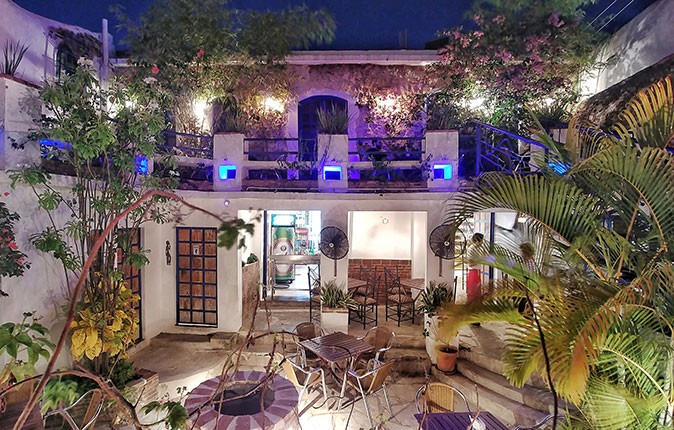
”This depends on what youre expecting, where youre coming from, and what you are used to. It also depends on where you are going to live in the Dominican Republic and what your budget is. Depending on these circumstances, you can perceive life in the Dominican Republic in a completely different way from another expat with a different background, budget, and needs.
It is important to know that the Dominican Republic is a developing country. Not everything will work and you’ll most likely experience power cuts or water shortages. However, the more upscale your area, the less likely you are to be affected by this. Especially Punta Cana, the wealthy neighborhoods in Santo Domingo (incl. the Colonial Zone), and other strategic areas are very stable in terms of basic infrastructure services.
But in general, just take your time to adjust to a new place and a new type of life.”
Also Read: Things to Consider Before Moving to Another Country
Any Resources You Found Useful During the Process of Moving to and/or Building a New Life in the Dominican Republic?
”Facebook groups are really helpful to find apartments and long-term rentals. There is a general group called Dominican Republic Expats but there are also several groups for specific locations (Santo Domingo, Punta Cana, etc.) so simply do a search on Facebook and join any relevant group you come across.
If you want to work for a company in the Dominican Republic you’ll most likely need a work visa. It is best to do this through the company as the process can be slow and the level of bureaucracy in the country can get frustrating.
If you’re planning to live in the Dominican Republic temporarily as a digital nomad, you can apply for temporary residence through the immigration department. Many people however choose to simply live on a tourist visa and pay the fees for overstaying which are quite moderate compared to the cost of getting a temporary residence.”
Is There Something You Just Have to See or Do When You Are in the Dominican Republic?

”Tough question! The DR has so much to offer.
Ok, let me share five of my favorite areas and places to visit in the Dominican Republic:
1. Saona Island
Even though it is the most visited tourist attraction in the Dominican Republic, it is incredibly beautiful. And there are ways to explore Isla Saona off-the-beaten-track, so there is a chance to enjoy this paradise without the crowds.
2. Saman
Saman has the best of everything and is therefore a perfect place to live and to spend a vacation. There are a lot of pristine beaches, endless coconut groves, wonderful hikes, but also the necessary infrastructure including affordable apartments, large supermarkets, and good accessibility by road.
The fact that there are hardly any all-inclusive resorts adds to the vibrant beach life.
3. Cabarete
If I could freely choose where to live in the Dominican Republic, it would most likely be Cabarete (or Las Terrenas on the Saman Peninsula).
This town is a surfers hotspot with plenty of amenities such as laid-back beach bars, cute cafs, a young mixed Dominican and international crowd, and reasonable prices. Plus, you have lots of outdoor activities and adventures around, among which the Cordillera Septentrional.
4. Cordillera Septentrional (North Coast Mountain Range)
This mountain range is my favorite area of mountains in the Dominican Republic, particularly due to its incredible turquoise rivers and the multiple pristine and hidden waterfalls, which guarantee some great hikes through the tropical jungle.
5. Colonial Zone
Last but not least, the place where I lived for several years the Colonial Zone in Santo Domingo.
This is a wonderful place with history, lots of bars, a great community, traffic-calmed areas, and many Dominicans who love to come here for the evening.
It is a melting pot of everything the Dominican Republic has to offer. Super safe, but not upscale, hence very authentic and a great place to live.
And besides these five places to visit I would definitely suggest making an effort to get to know the locals. It is worth leaving the expat bubble, as Dominicans are super welcoming if treated with respect.
Learning how to dance also helps in understanding their culture and habits.”
About Chris
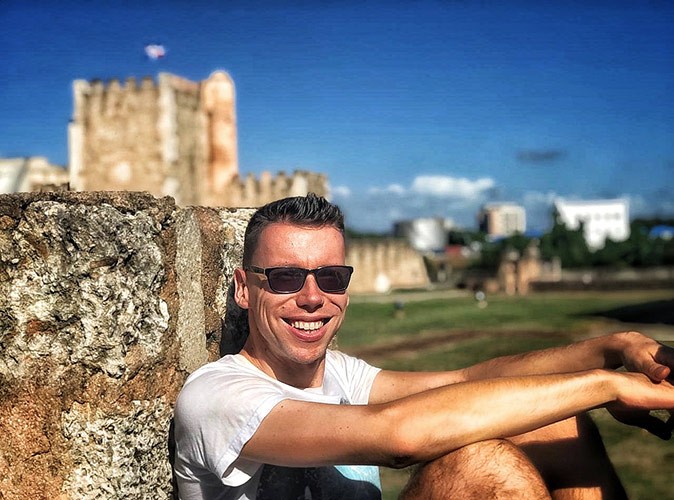
Chris has studied and worked in tourism for more than 15 years, is passionate about exploring the world and has traveled to more than 80 countries. He has lived abroad for more than 10 years up until now, mainly in the Caribbean ( in Grenada and in Santo Domingo and Punta Cana in the Dominican Republic).
If youd like to know more about all the pristine beaches and secluded waterfalls you can explore in the Dominican Republic and other countries (especially those away from the crowds), you can find more information in his travel blogs My Travelworld and Punta Cana Travel Blog.
Chris also offers travel coaching and can set up a personalized itinerary for your vacation in the Dominican Republic and elsewhere.
About the Dominican Republic

The Dominican Republic is the second largest country in the Caribbean. It covers an area of around 18,700 square miles (48,400 square kilometers) and shares the island of Hispaniola with Haiti.
Its population exceeds 11 million, making it one of the most populous countries in the Caribbean. The capital, Santo Domingo, is the largest city in the country and also one of the oldest continuously inhabited European settlements in the Americas.
Boasting a tropical climate, the Dominican Republic showcases an array of landscapes, from serene beaches to verdant mountains, ideal for nature lovers. Its cultural heritage, a fusion of Taino, African, and European influences, is deeply woven into the fabric of daily life, reflected in music, dance, and cuisine.
The country’s economy is diverse, relying on sectors like tourism, agriculture (notably, sugar production), manufacturing, and services. The nation’s rich history is depicted in its many historical sites, including colonial-era architecture and archaeological relics.
The diversity of the country makes it attractive to a wide range of tourists, expats, and digital nomads.
Diverse housing options cater to various preferences and budgets, ranging from living in beachside villas to soaking up the local culture in city apartments.
Also Read:
![]()

